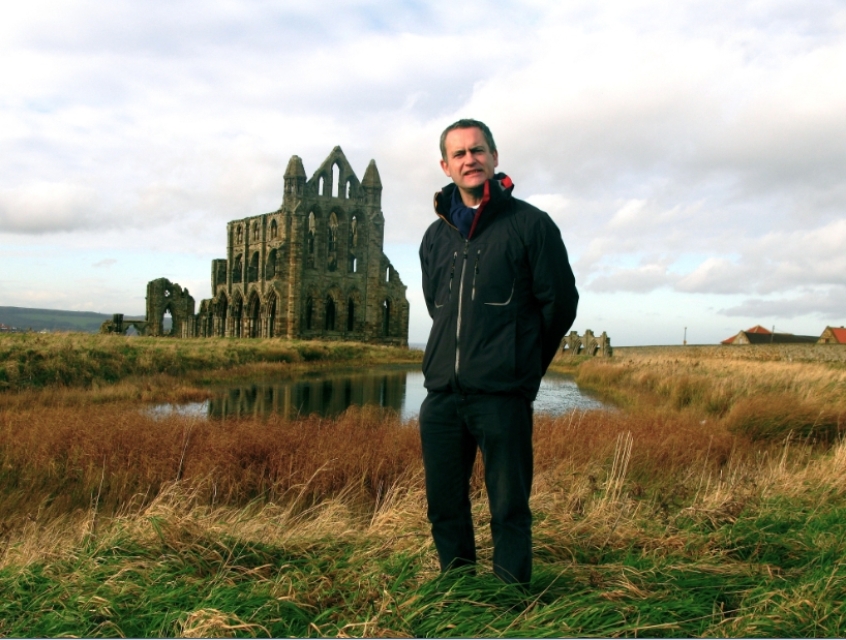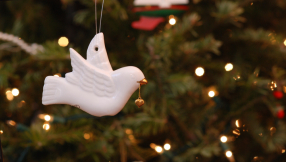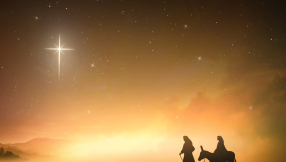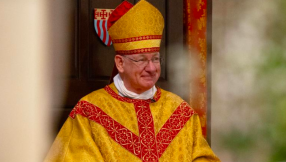
A travel writer's discoveries from a five-year journey around Britain's most sacred sites has been turned into a special TV series being broadcast by the BBC in the run-up to Easter.
In Britain's Holiest Places, Nick Mayhew delves into the mysterious and wonderful across England, Scotland and Wales, from a sighting of the Loch Ness monster to water rituals and sacred bathing.
The series is a joint commission from the BBC and SC4, and includes interviews with the Archbishop of Westminster Vincent Nichols, and the Dean of St Albans, Jeffrey John.
Archbishop Nichols claims that the Reformation in England ended in the 1990s and likens the scale of mourning for Princess Diana following her death in 1997 to the tradition of venerating saints' shrines.
Jeffrey John gives speaks about the recent discovery of relics in the cathedral of St Alban, England's first local saint and martyr.
Britain's Holiest Places is a little different from Mayhew's first guide, which covered the world's best beaches for nude bathing.
"I avoided television interviews for the last book because of the inevitable requests to broadcast in the buff," he says. "But this time I was delighted to accept the invitation and will appear in the first programme where we dip into the wonderful world of water rituals and sacred bathing here in Britain.
"From the first sighting of the Loch Ness Monster by a sixth century missionary, who supposedly drove the beastie away with the sign of the cross, to the oldest church in the country at Bradwell-on-Sea in Essex, there are some mysterious places and wonderful tales to enjoy."
Mayhew accompanied the crew and presenter, Welsh poet Ifor ap Glyn, during filming. He recalls how they very nearly disrobed for the cameras and were only stopped by health and safety.
"We wanted to recreate an authentic Roman era baptism for the sacred water episode, so visited an ancient holy pool, a very rare survivor from the early church, hidden away amid fields in Northumberland.
"The original baptism ceremony insisted on full nudity in public for all baptismal candidates. Ifor was game for the experience and I felt ready to take the plunge at last, until we spotted a National Trust sign warning that the pool should not be disturbed because it was piped directly to domestic water supplies – so twenty-first century health and safety rules prevented our planned re-enactment of ancient ritual," he quips.
Britain's Holiest Places is on BBC Four at 8:30pm every Thursday until 11 April. Places highlighted in the series include:
o Barnes, South West London - the roadside shrine to poet and glam rock singer Marc Bolan at the site of his death in a car accident in 1977
o Roche Chapel, St Austell - remote and other-worldly as it appears in the movie Omen 111, the Final Conflict
o Ingleby Anchor Church in south Derbyshire - the rarest of rudimentary churches, carved into a remote riverside cave where hermits once hid from the world
o Pendle Hill in east Lancashire - a curious landmark that inspired George Fox to establish the Quaker movement
o Kendrick's Cave in Llandudno north Wales - traces of ritual burial dating back 14,000 years
o Glasgow Cathedral - the grand final resting place of St Mungo, the city's first inhabitant whose mass pilgrimage laid the foundations for the city's origins
o Lady Julian's shrine in Norwich - the tiny church room where the first female English author chose to be bricked up to live in devout contemplation for thirty years
o Buxton holy well - where Buxton mineral water is drawn and bottled. But we discover that our modern-day love of bottled spring water has roots stretching back to before the Romans.
"Notwithstanding the sacred nature of the sites revisited for the television series, the locations are amongst the most evocative and tranquil parts of Britain, many lovingly cared for today by English Heritage and the National Trust," says Mayhew, who is also a lay minister in the Church of England.
"These are places where natural beauty and lingering traces of ancient devotions combine. It is a world that is so much more appealing than the sterile debates about religion in the media today.
"Britain's religious history is mostly Christian, but it is far more diverse and provocative than you would expect. We also visit sites touched by even older pagan rituals and visit a Celtic hermit's remote island that is now a thriving Buddhist retreat.
"So much is written about our beautiful landscape, so many stories and beliefs that embrace creation and the chaos of human existence in all their glory. No-one climbs a mountain or rows to an island to pray today, but we show some extraordinary places where our ancestors did just that.
"With a bit of imagination and a love of natural wonder you can still use all these amazing holy sites for an unforgettable spiritual experience – as Ifor himself discovers again and again."













